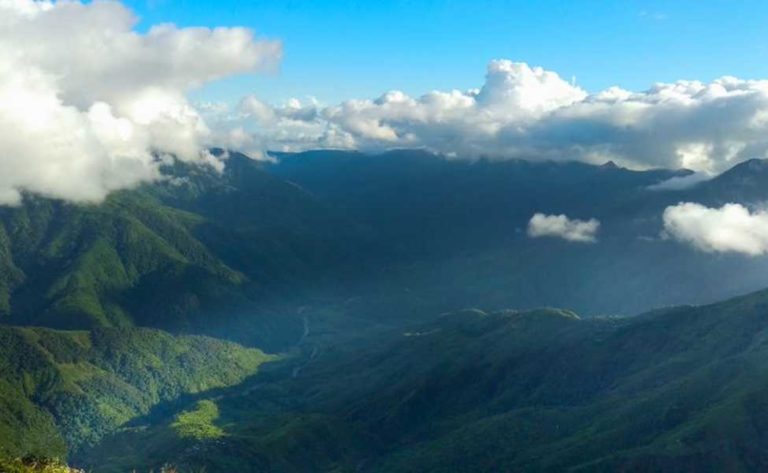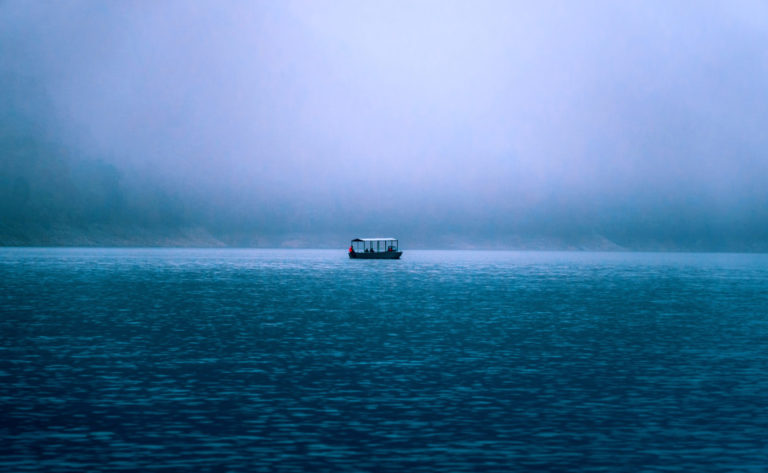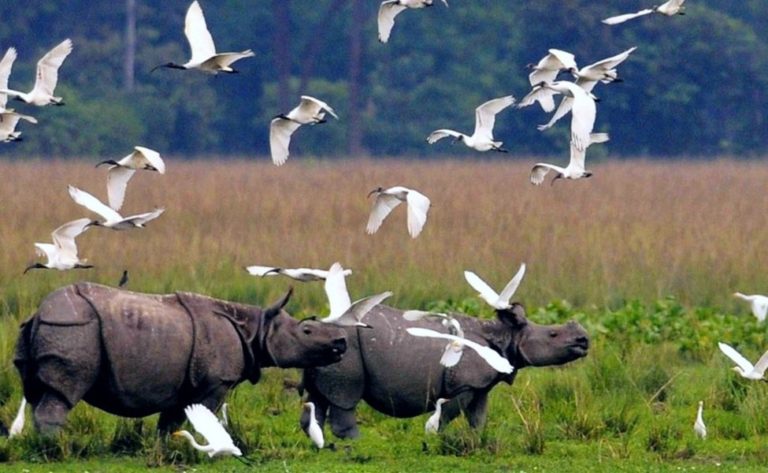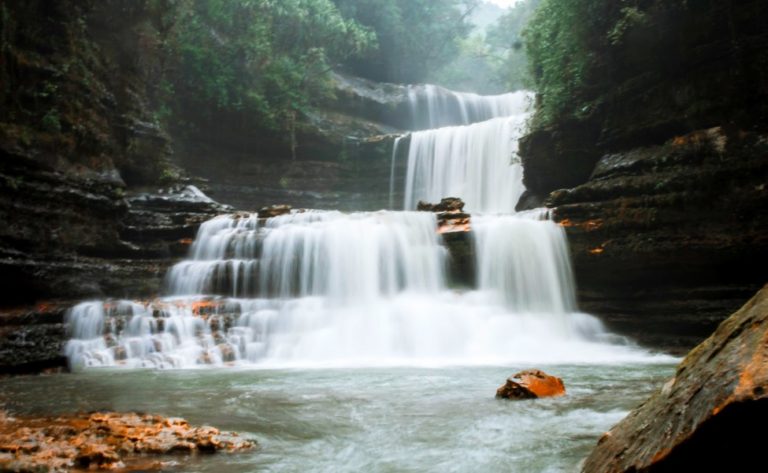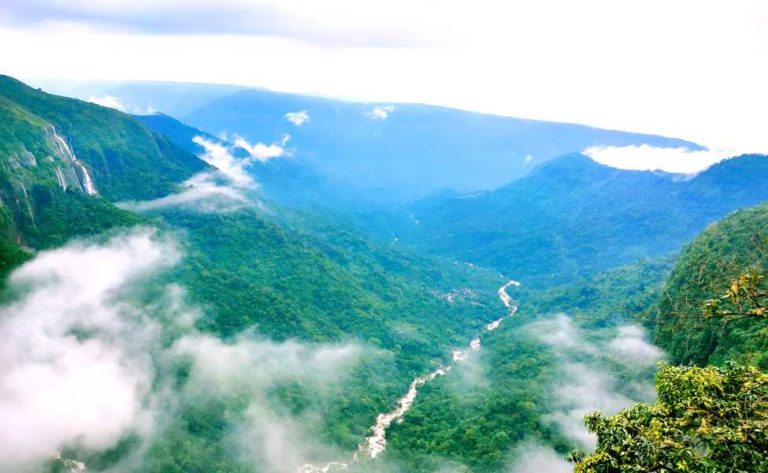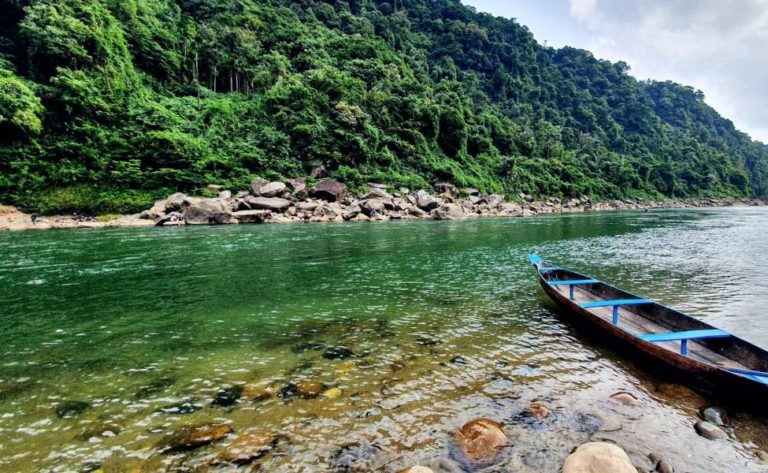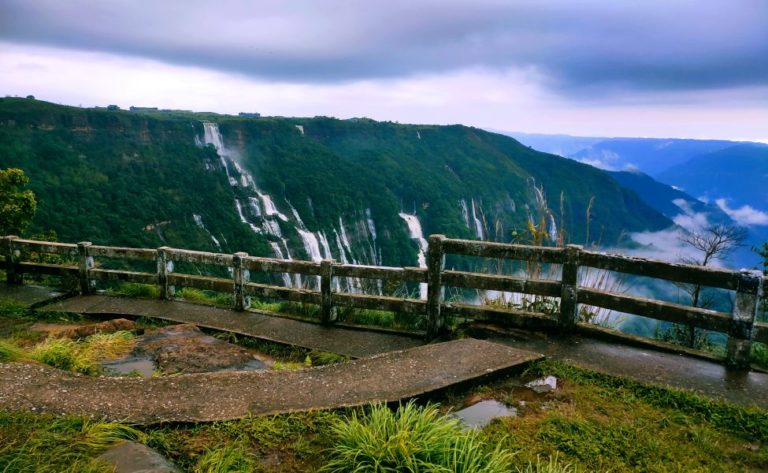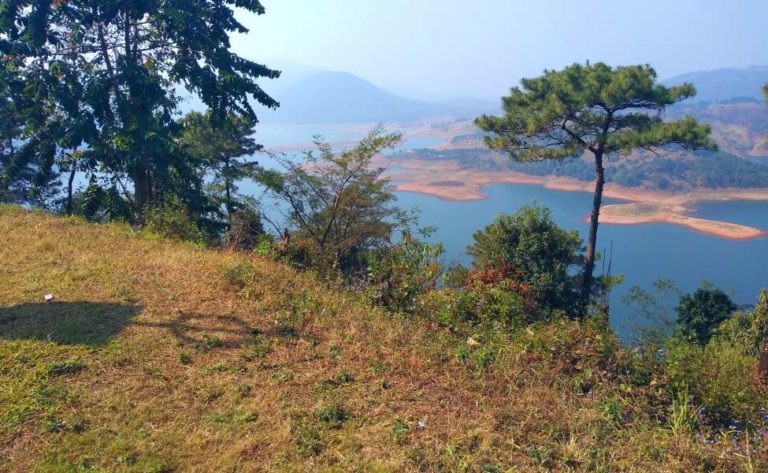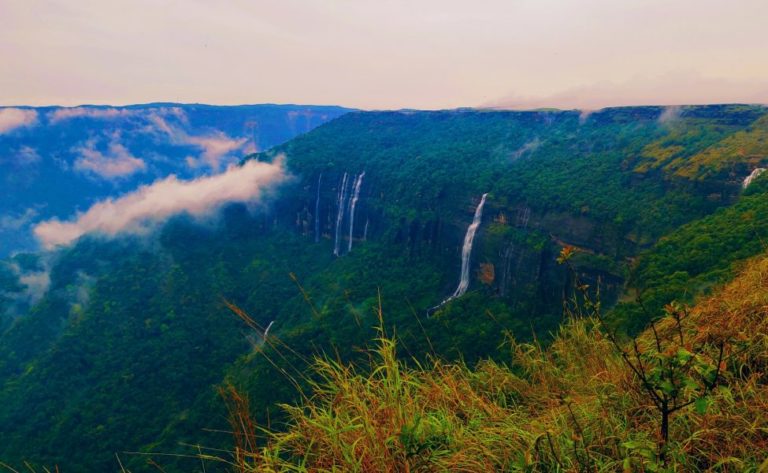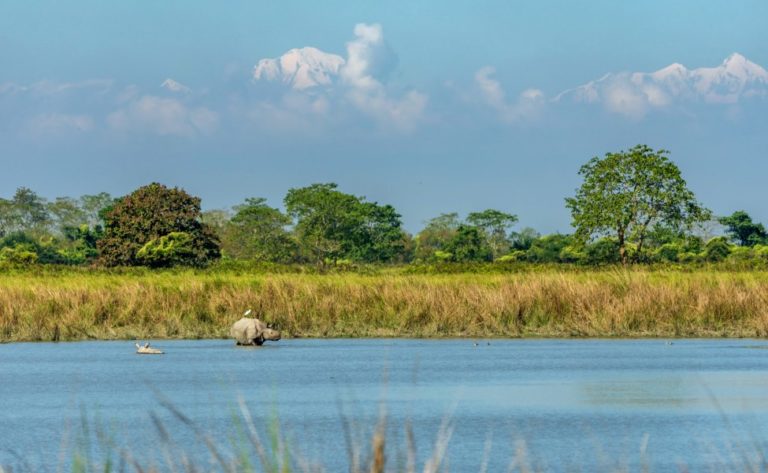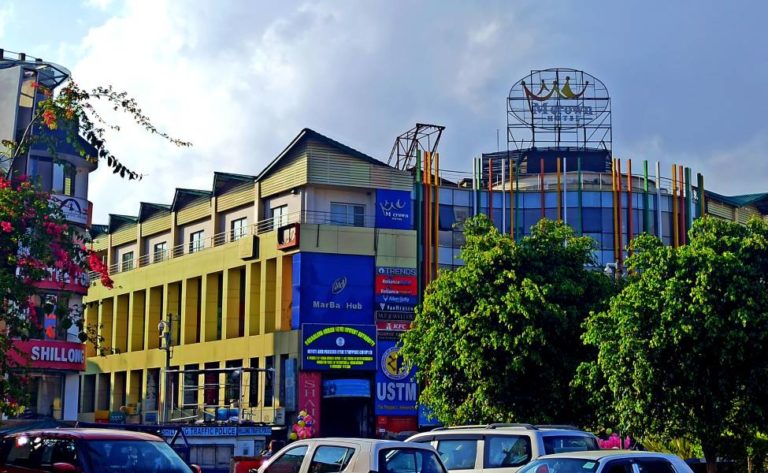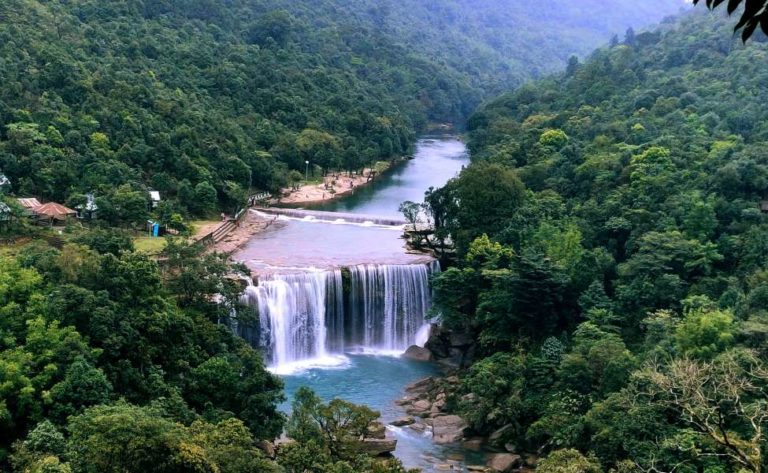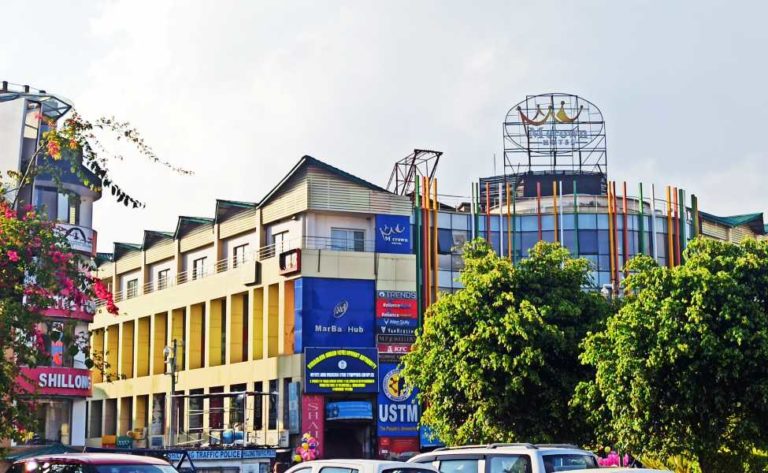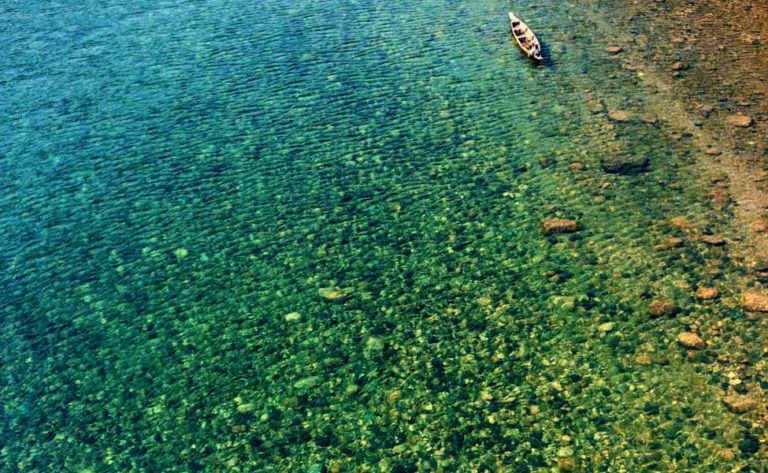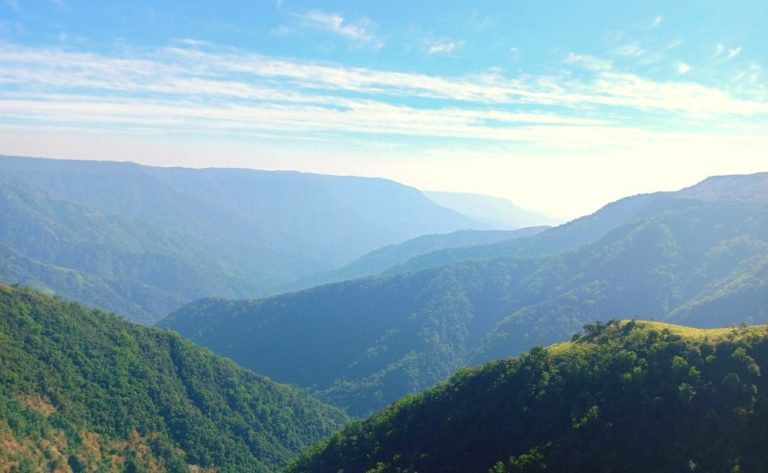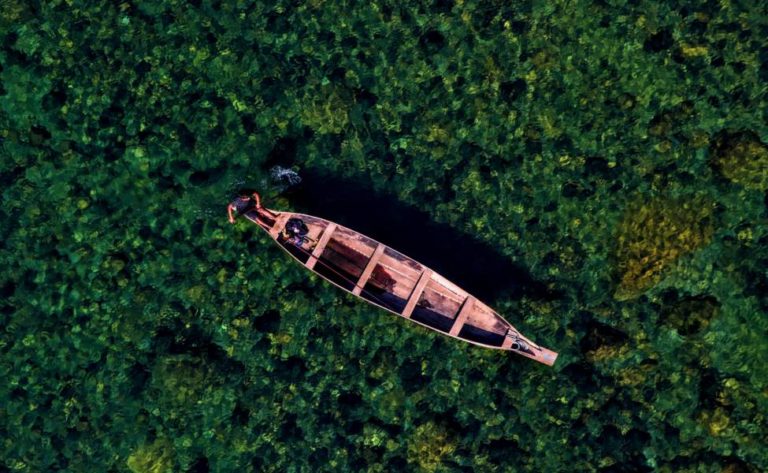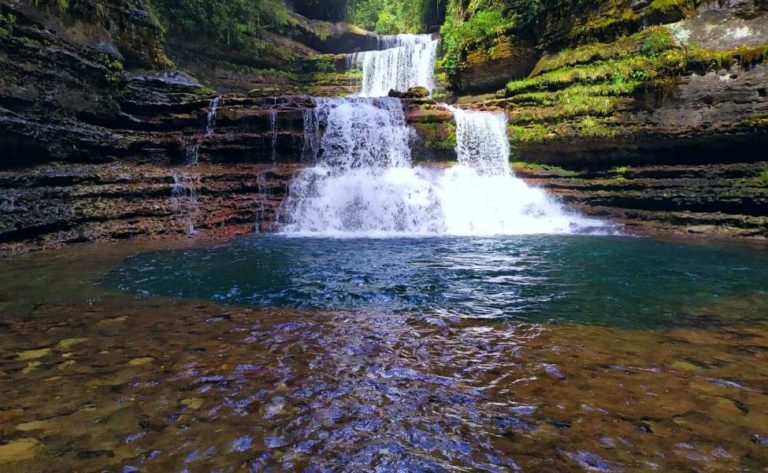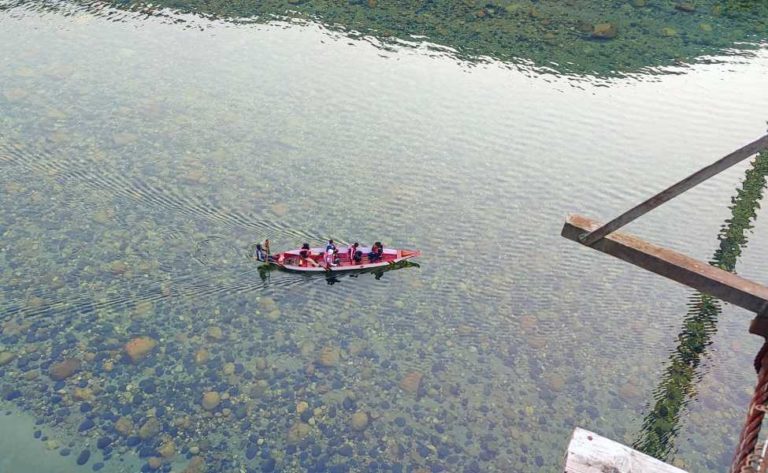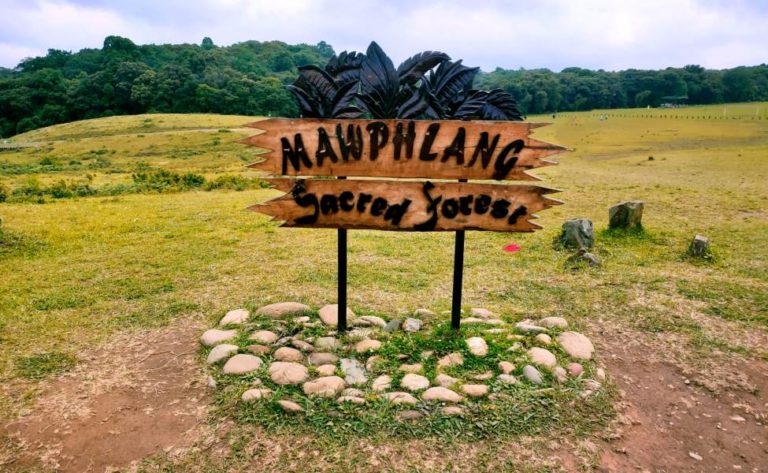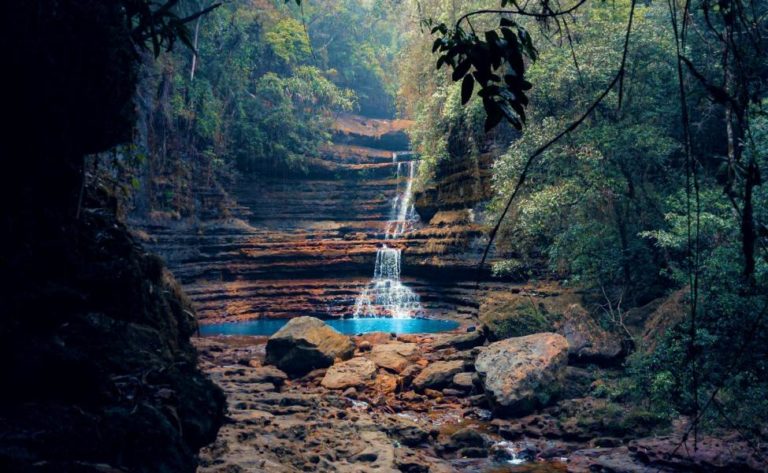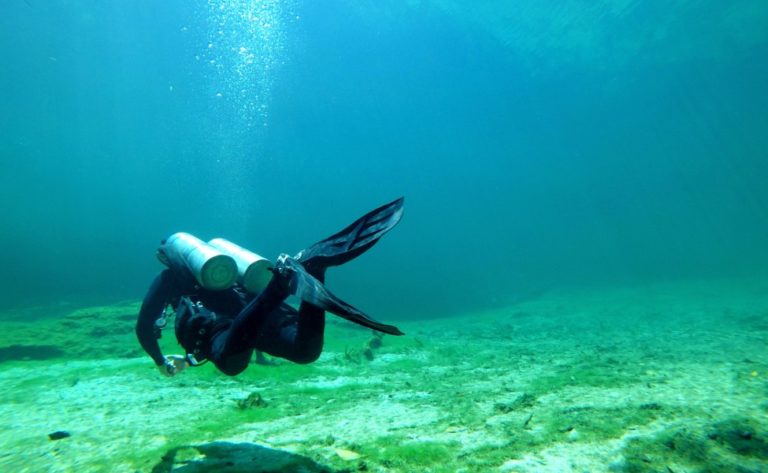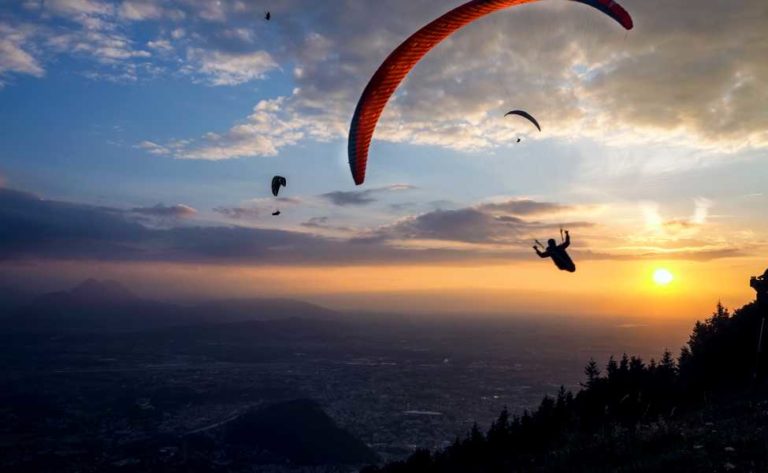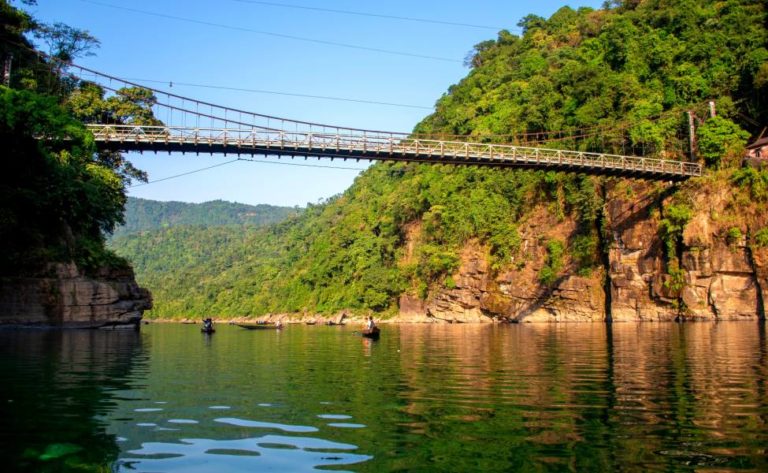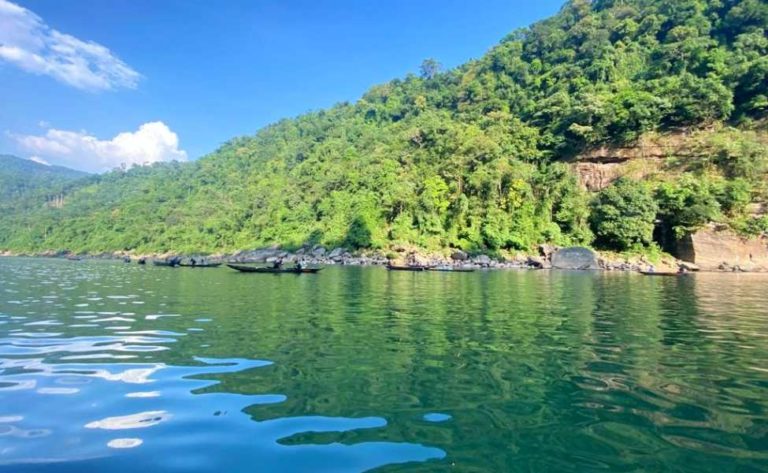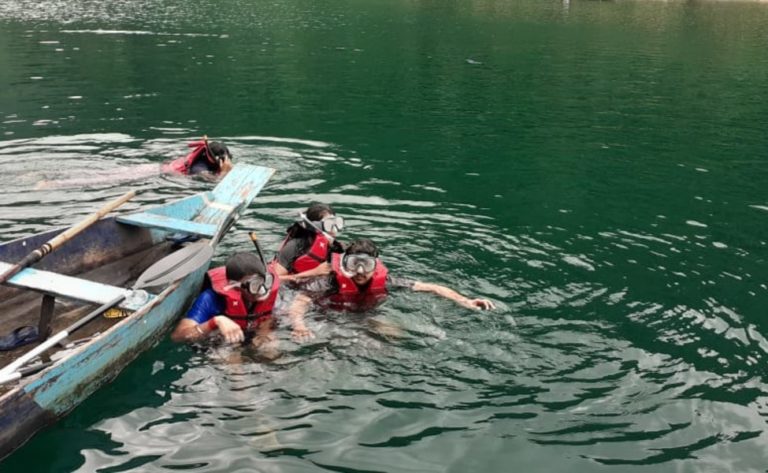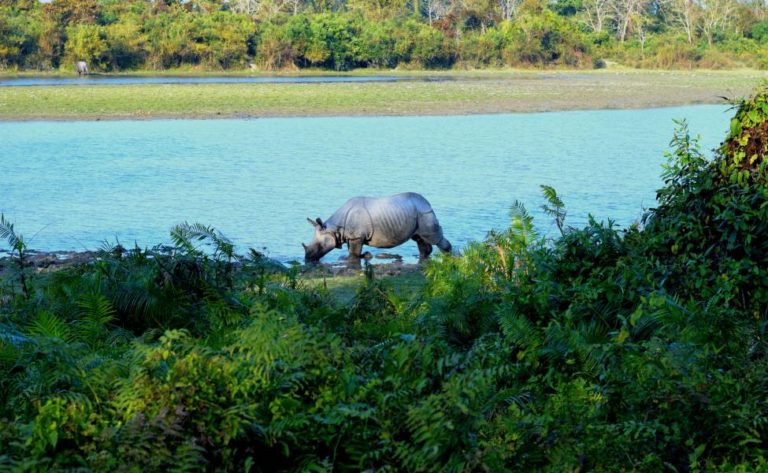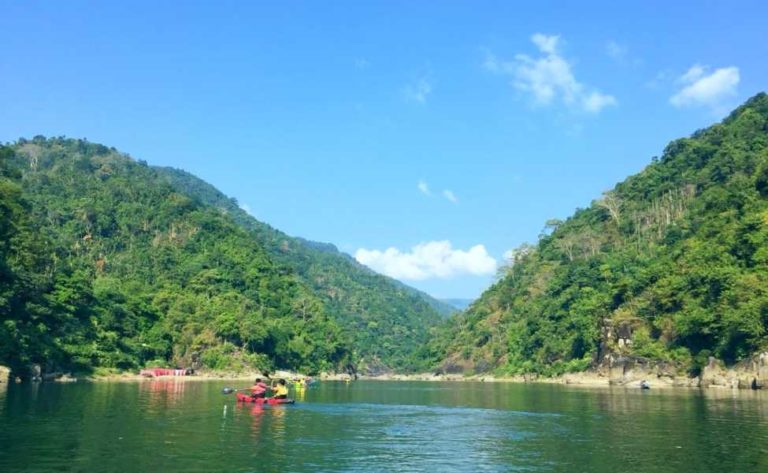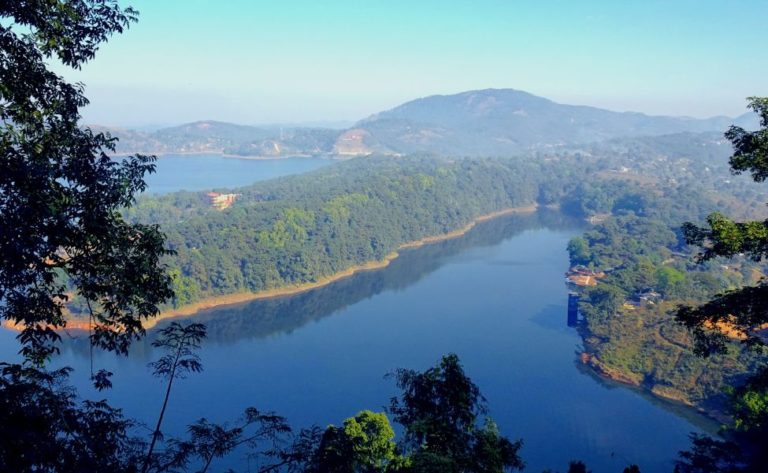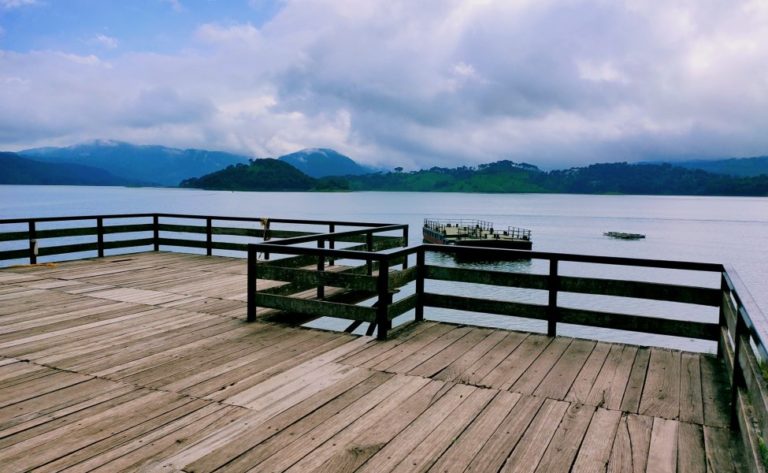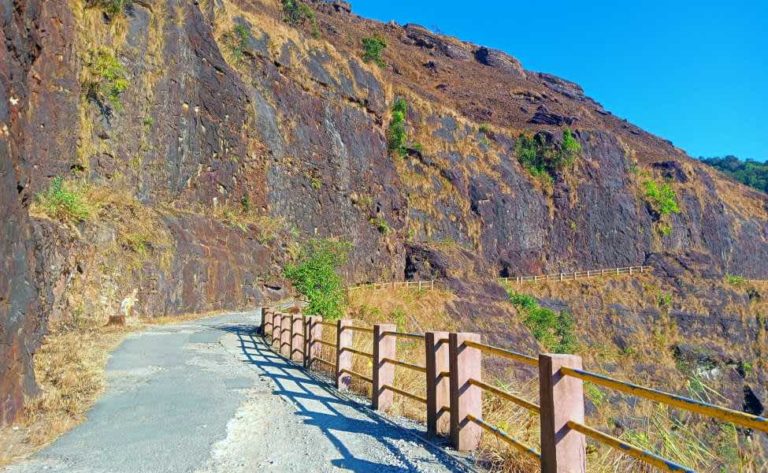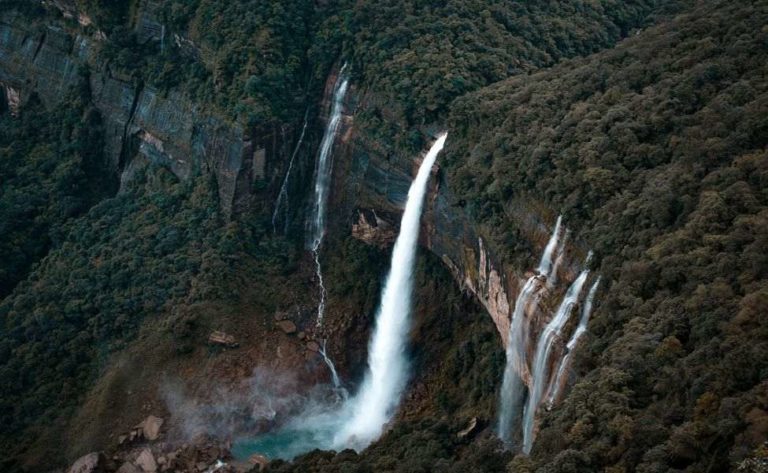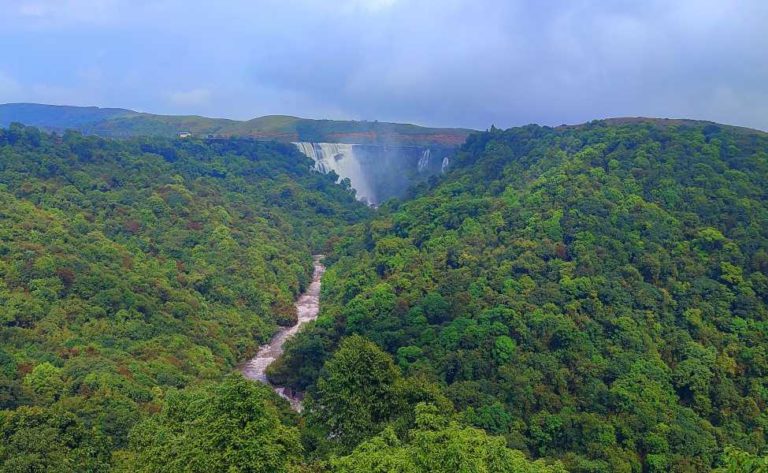
Assam Tourism: A Glimpse into the Heaven
Assam Tourism: A Glimpse into the Heaven
The state of Assam is the entrance to the north-east, which is renowned for its unique plants and wildlife, tall green valleys, huge rolling plains, powerful water paths, and a region of expos and celebrations. Assam is also the doorway to the Indian subcontinent. Pragjyotishpura, the kingdom’s capital, was located in or close to Guwahati and was referred to in old literature as the realm of Pragjyotisha and Kamrupa. Bits of current Bengal and Bangladesh were also of one point, additionally to modern Assam. Current history gives rise to the term Assam. Invasion of Assam by the Ahoms led to its introduction into use. The term “Assam,” which means lumpy, is also considered to have its origins in the term “Asama.” It is ruled over by the powerful Brahmaputra, among the world’s largest rivers, which not just offers a lush alluvial plain for cultivating paddy crops but is also popular for its tea plantations. Earthquakes frequently occur. Assam is gratefully endowed by nature with a plethora of unique and nearly vanished animals, as well as a profusion of pleasing splendour. Assam is home to four oil plants: Digboi, Noonmati, Bongaigaon, and Numaligarh, which also houses a petrochemical plant. The state also produces a significant amount of gasoline. The usage of bamboo is to make paper, woods still provide necessary materials for tanning, including husk from trees and resins. The state’s businesses include paddy and oil milling, sugar, jute, silk, paper, and plywood manufacturing in addition to a civic fertiliser facility at Namrup. This landscape was created by nature to look like a grassy carpet. There are rolling plains and dense woodland in this country.
What Makes Assam So Famous?
The Northeast Region’s Assam state sits in the middle and acts as a bridge between the other Seven Sister States. Without including Assam on the agenda, a trip to North East India is both insufficient and unthinkable. Tourists visiting North East India can find a number of top attractions in Assam. Oral history, enigma, tales and stories abound in Assam. It is among the States in India with the greatest green cover. In addition, Assam is also recognised for its handmade products made of materials including brass, bamboo, and cane. Assam is quickly emerging and being among the most alluring visitor places in India because of its ancient structures and monuments, stunning scenery and unusual animals, vivid people and their vibrant celebrations, and a huge variety of thrilling activities.
Best Time to Visit Assam
When the weather is nice, winter or summer are the finest times to travel to Assam. The summers are pleasantly rejuvenating, while the winters are pleasantly frigid. Though it is not the ideal time to visit Assam, the monsoon season should be avoided because the area gets intense rains throughout those months. Assam will show off its beauty to anyone who wants to discover this country, whether it is summer or winter. Prepare to be in awe of the area’s unmatched beauty and all of its various man based creations and essential attractions.
How to Reach?
Assam is reachable through methods of transportation via air, land, or railroads. Every road, train station, bus stands, and airport are kept in good condition for the comfort of both tourists and residents of Assam.
By Air
Lokpriya Gopinath Bordoloi International Airport in Guwahati, Assam, represents the sole international airport in the region that has decent connections to all of the major cities of India. Another choice is the Dibrugarh Airport, which offers decent relations to cities including Dimapur, Kolkata, Ahmedabad, Delhi, and Guwahati.
By Train
Assam has 259 railway stations, and they are well connected to both other parts of the state and to other well-known tourist destinations in India. Chennai, Bangalore, New Delhi, Mumbai, and Cochin. The principal railroad pivots in Assam include Guwahati, Dibrugarh, Goalpara, Jorhat, Golaghat, and numerous others in the loop.
By Road
Assam has great road accessibility, as well as its byways and roads are kept in good condition. Bus services are offered both inside Assam and to neighbouring states by Assam State Transport Corporation, an Assamese state-owned company that operates roads. Monsoon season should be avoided if you’re planning on travelling by road during that time, when the area experiences dense rains and landslides frequently.
History, Language and People of Assam
History
Assam’s history has gone through numerous stages of growth to get to where it is now. Four eras can be used to categorise Assam’s history. The formation of the Kamarupa kingdom and the Allahabad pillar’s inscriptions by Samudragupta include a reference to Kamarupa signalling the start of the ancient era in the fourth century. Following the dissolution of the old monarchy and the emergence of mediaeval kingdoms and chieftain-ships in its stead, the mediaeval age was marked by the Bengal Sultanate’s raids, which is first of all was launched in 1206 by Bakhtiyar Khilji, as documented in the Kanai-boroxiboa rock engraving. The Treaty of Yandaboo in 1826 marked the beginning of British colonial rule, and the post-colonial era started in 1947 post independence. Assam currently occupies 78,438 square kilometres of space. It is known to have the highest population density in all of Northeast India and comprises thirty-three districts.
Language
In Assam, Assamese and Bodo are recognised as formal languages, on the other hand Bengali is recognised as stiff in a few Barak Valley districts. Assamese is the primary language of Assam. Around the seventh century AD, it progressively developed from the Sanskrit language. The local tongues of Assam include Dimaca, Mishing, Karbi, Rabha, Tiwa, etc. These local tongues have a close relationship with Bodo and are descended from Tibeto-Burman. Small ethnic groups in different regions of Assam speak languages like Tai-Phake, Tai-Aiton, Tai-Khamti, etc., which are descended from the Tai-group of languages of Southern China and SouthEast Asia. Languages like Manipuri, Khasi, Garo, Hmar, Kuki, etc. are additionally spoken in several regions of Assam.
People
Those of Mongolian, Indo-Burmese, Indo-Iranian, and Aryan ancestry make up a sizable portion of the Assam populace. Tribes with Mongolian ancestry predominately live along Assam’s steep terrain. Assamese, the state language of Assam, and Assomiya, the language spoken by this large racial admixture, are terms used by the natives of the Assam state. With regard to diversity in customs, culture, attire, and unique ways of life, the state is home to the most distinct tribes. The majority of tribes speak their own dialects, as well as elements of their traditions are so fascinating and vibrant that they make outsiders astonished with what they are all about. There are twenty two million people living in Assam, eighty nine percent of them are rural, according to the 1991 census.
Travel Guides
Top Tourist Attractions In Assam
Assam’s diverse lifestyle, customs, and tourism attractions will astound and revere you. One must tour a few excellent locations in Assam if they want to enjoy the sumptuous sights and have a nice holiday.
Kakochang Waterfalls
The breathtaking Kakochang Waterfalls in Jorhat roar violently between coffee and rubber farms. Thirteen kilometres from Bokakhat in Jorhat is the primary waterfall, which draws large numbers of visitors all year long. This waterfall provides a wonderful topic for photographers as well as a cool retreat in addition to offering breathtaking scenes of the remains at Numaligarh and the lovely green tea plantations.
Pobitora Wildlife Sanctuary
Pobitora Wildlife Sanctuary, which is located in the Eastern Himalayan uplands, provides visitors with unmatched vistas of the unending orchis pastures and snowy Himalayan tops as well as the opportunity to see some of the nation’s unique animals and bird breeds. Due to this sanctuary’s shared boundaries with Arunachal Pradesh and its fusion with the Pakhui Wildlife Sanctuary, It offers tourists the finest of both globes.
Kaziranga National Park
One ought to visit Kaziranga if they previously believed that the Indian one-horned rhinoceros only lived during the Jurassic period. Over 2200 Indian one-horned rhinoceroses, or almost two-third of the species’ global count, live at Kaziranga National Park, among the highly popular wildlife vacation spots in India. The park’s 430 square kilometre territory is dotted with elephant-grass pastures, marshy lagoons, and deep woodlands. Here, one may mostly find four kinds of flora, including greenlands flooded by alluvial water, alluvial savanna woods, tropical semi-evergreen woods and damp mixed deciduous forests in the tropics. One of the famous trees that visitors to the park can see are the kumbhi, Indian gooseberry, cotton tree, and elephant apple. In addition, reservoirs, ponds, and the banks of rivers are home to a wide diversity of water plants. The greatest number of Indian rhinoceroses in the globe is in the woodland area of Kaziranga Park. Other creatures that can be spotted in Kaziranga’s elephant grass, marshes and lusciously wet tropical broadleaf woods include Hoolock Gibbons, Tigers, Leopards, Indian Elephants, Sloth Bears, Wild Water Buffalo, Swamp Deer, etc. There may also be numerous migrating bird types from Central Asia in this area.
Tocklai Tea Research Centre
Tocklai Team Center, also referred as Tocklai Tea Research Center or Tocklai Experimental Station for Tea Research, is a facility and probe organisation located next to the River Tocklai in Jorhat, Assam. This tea station, which was confirmed in 1911 and is considered one of the biggest and earliest tea stations on the globe, is unquestionably a must-see location for all tea enthusiasts. The goal of this place is to advance tea production by identifying various strategies for raising the beverage’s nutritional evaluation. Botany, soil, agronomy, engineering, biochemistry, tea tasting, plant protection, statistics, manufacturing agrarian economics, technology are the center’s eight primary probing divisions.
Guwahati
Guwahati, whose count is among the rapidly increasing in the world, is situated near the Brahmaputra River’s vault. However, the lack of proper spending in the area, which is evident from the poor standard of roads, partly dampens the nice surroundings. Nevertheless, despite the city’s ordinary design, It has attracted the attention of private investors. As a result, Building activity has kind of increased in luxury apartments and purchasing centres, which has benefited the city’s economic standing. Guwahati’s economic prosperity has also been aided by the conclusion of Assam’s protracted uprising.
Orang National Park
The state’s first game preserve, the Orang National Park, is 78.80 sq. km. area. It is located immediately on the north bank of the Brahmaputra River. It may be found in the Indian state of Assam’s Darrang and Sonitpur districts, positioned on the Brahmaputra River’s northern bank. It was established in 1985 as a sanctuary, and on April 13, 1999, it received the national park designation. It is also referred to as the “little” as a result of the two parks, Kaziranga National Park sharing a marshy, streamy, grassland-dominated habitat and both are home to the Great Indian One-Horned Rhinoceros. The Great Indian One-Horned Rhinoceros, Pygmy Hogs, Elephants, Wild Buffalo, and Tigers are just a few of the park’s numerous plant and animal species.
Nameri National Park
On the eastern slopes of the Assamese Sonitpur region is where Nameri National Park is located. Nameri encompasses an area of 1000 sq km along with Pakhui National Park in Arunachal Pradesh. In 1998, the preserve was designated as a national park, and the Indian river that runs through it, the Jia Bhoroli, is well-known for its excellent fishing. Nameri is made up of slender stretches of open meadow near rivers, as well as damp, forests of semi-evergreen trees with cane and bamboo fences. In addition, it is renowned for having three hundred species of birdie, including the white-winged wood duck, big pied hornbill, wreathed hornbill, rufous necked hornbill, black stork, ibisbill, blue-bearded bee-eaters, babblers, and sandpipers.
Manas National Park
India’s northeastern state of Assam, a centre for diversity, is home to the Manas Wildlife Sanctuary. It stretches the Manas river, spanning an area of 39,100 hectares, and is bordered to the north by Bhutanese woods. Numerous forested valleys, alluvial meadows, and tropical evergreen woods are among the spot’s aesthetic highlights. For unique and threatened species including the Bengal florican, swamp deer, larger one-horned rhino, and tigers as well as pygmy hogs and swamp deer, the property offers vital and sustainable habitats. Manas is among the most important essential regions still present in the continent of India, and it holds a special place in the hierarchy of protected places across the continent because it is still home to sizable populations of numerous endangered species.
Assam State Zoo And Botanical Garden
Anyone who appreciates the natural world, wildlife, and wishes to pause for a while in one of the state parks regions while going a detailed look at more than nine hundred distinct animal, bird, and reptile genera should travel. Among the most popular zoos is the Assam State Zoo, interesting sites to travel to throughout Assam and is located close to the centre of the Hengrabari Reserved Forest in the city of Guwahati. The zoo and botanical park, which opened its doors to tourists in 1957, has grown over the years and today is home to a variety of animals, including tigers, elephants, leopards and so many more species. Other creatures that can be spotted in this area include chimpanzees, white rhinos, kangaroos, zebras, pumas, ostriches, jaguars, and llamas.
Panimur Dima Hasao
A well-known tourist destination Panimur Falls is in Assam. It is located in the North Cachar Hill District. The Kopili River, which is blocked by rocks and is located around 120 miles from Haflong, transforms into a rushing white-milk waterfall at Panimur, which has a truly eternal beauty. Many snappers and environment enthusiasts come here because of the expansive perspective of the surroundings. This location has a Forest Inspection Bungalow that can house a few guests, although reservations are required, especially during the busy travel season. Since Panimoor is the only hill station in the district, it is popular with visitors, in particular during the winter and spring. The legendary Assamese musician Bhupen Hazarika once addressed the Kapili River as the “happy damsel” in a song. The Panimoor location is where the Kapili River, however, exhibits its wilder side. Other tourist-drawing locations nearby include Maibong and Umrangso. Late fall and early winter, and spring are the finest seasons to explore Panimoor Fall.
Guwahati Planetarium
All of North-Eastern Asia, including Assam in India, the Guwahati Planetarium serves as the primary location for astronomical study and education. 1994 marked the start of it. The Guwahati Planetarium is unrivalled thanks to its unusual slope with dome sides that set it apart from the area’s cityscape. Along with daily programmes, the planetarium frequently offers meetings, garage, and lectures for the astrometry community as well as shows, competitions, and external watching areas during eclipses. Kids and young people who are interested in learning about space exploration and abstract items will find this area to provide a great deal. The Guwahati Planetarium’s hours and admission prices are from morning 10:00 am to evening 5:00 pm, Monday through Saturday, excluding Sunday, and an adult admission cost of INR 30 is required.
Sivasagar
Northeastern Indian town of Sivasagar, often written Sibsagar, is located in the state of Assam. Northeast of Jorhat is around 30 km away, on the Brahmaputra River’s tributary, the Dikhu River, is where Sivasagar is located. In the 13th century, inhabitants of Ahom who speak Tai arrived in the region from China’s Yunnan province. During the 18th century, Rangpur was the name of the town. The seat of government of the Ahom kingdom was Sivasagar; some temples from that era are still standing today. The village today serves as a filtering hub for tea along the national highway and Northeast Frontier Railway. Along with producing tea, the area around it also makes rice, silk, mustard, and lumber. This historic city’s impressive temples to Shiva, Vishnu, and Durga Maa, together with one of the biggest tanks created by humans, are just some of its famous landmarks that recall the former elegance of its regal past.
Umananda Island
Umananda Island, the tiniest river island in the world, is home to many stories and is a tranquil setting for coexisting peacefully with the environment. The Mighty Brahmaputra River flows right through the centre of Guwahati, where Umananda Island is located. It hasn’t happened yet for humans to completely obliterate an island that is the subject of numerous legends. British colonists gave it the title Peacock Island because of its design. Among the Himalayan people, Golden Langurs, a very uncommon and threatened animal, are revered as being extremely sacred. They can be found on the island. According to tradition, it is the same area where Lord Shiva’s third eye turned Lord Kamdev (the Lord of Love) into embers when the latter attempted to disturb Shiva’s contemplation, giving the area the alternate name Bhasmchal. Lord Shiva is the focus of the Umananda Devi Temple and draws a sizable surge in worshippers during religious festivals, is the island’s main draw.
Padam Pukhuri
The most famous landmark in Tezpur is the Padum Pukhuri Lake and literally translates to “lotus pond,” with a central island that has been transformed through a melodic fountain into a park. An iron footbridge that connects Island Park is also connected to the mainland by a beloved extra attraction that the tourists enjoy. At Padum Pukhuri Lake, tourists can occasionally rent rowboats, paddle boats, and other watercraft for various tourist-related water pleasure activities. Another amenity in the park is a model train, which is enjoyable for both children and adults.
Travel Advice on Assam
If you’re going to Assam during the summer, you have all the necessary materials you will need, like an umbrella, sunscreen, sunglasses, and more. As you are travelling to a new state, take precautions to keep your bags safe. The mouthwatering cuisine of Assam must be sampled at least once. So be sure to sample some delectable foods. Even while every tourist in Assam could be eager to take some unposed photos of the local tribespeople, not everyone would be comfortable with it. If you plan to take a photo of someone, be sure to get their consent beforehand because some people may be camera conscious.
Tips For Visiting Assam
Never let outsiders into your hotel room by opening the door, and make sure they are trustworthy before allowing them in.
Staying outside after night is not advised, especially in remote or deserted regions.
Make a spending plan that includes provision for your protection.
Observe the native customs, become familiar with a few local laws, and plan your route beforehand.
Traveler’s checks with you rather than cash. It is cautious to choose this when travelling in crowded areas.
Rainfall In Assam
The region experiences per-humid weather, which is defined by heavy rains, pleasant summers, and light winters. It is located in the cold to warm per-humid thermic-agroecological subzone. The region experiences yearly rainfall ranging from 2600 mm to 3200 mm. Rainfall often starts in April and lasts through the end of September. From the southeast to the northeast, rainfall tends to increase. It rains the most in July. In a typical year, 200 days with rainfall of at least 3.5 millimetres. Between 90% and 73% of the absolute humidity is present. The fluctuating temperatures range from 5.9°C in the winter to 39.9°C in the summer.
Things to do in Assam
Assam is one such area with a wide range of attractions for tourists. The following activities are enjoyable to undertake while visiting Assam:
Track Down the Fauna
The national parks of Assam are one of its most notable features, which is the major reason why wildlife lovers travel here in order to see the best animals. It is renowned for having several spots that have been explored and others that have not, where tourists can view several unusual types of vegetation. There are several national parks in Assam that you can visit, including Kaziranga, the most famous of all including other parks namely Manas, Gibbon, Barail, Burachapori, Nambor, and Pobitora.
Purchasing from Local Markets
There are silk sarees, paintings, and handicrafts all offered here for reasonable costs. A few of the best places to purchase are Fancy Bazaar, Pan Bazaar, and Paltan Bazaar. Regardless of where one goes, one shall never forget to incorporate purchasing in one’s plans. In Assam, any of the numerous shops will sell the greatest mementos.
Visit the Tea Plantations
There are distinctive tea plantations in Assam. The most scented tea one has ever tasted is available there. You can skip the tasting right now. Even yet, taking a leisurely stroll between two of these tea estates can be more than spectacular. Manohari Tea Estate, Nonoi Tea Estate, Almari Tea Estate, and countless more prestigious tea farms are examples.
Enjoy Festivals and Dive into the Culture
Assamese people participate in a variety of celebrations. One of the best ways to celebrate heritage variety is through festivals. In that, the Assamese are authorities. To show off their social status, Those attending dress in ethnic attire and adorn themselves with big decorations. An atheistic holiday that is observed without distinction of caste or religion. Mid-April saw the celebration of Rongali or Bohag Bihu, which marked the arrival of spring and the start of the planting season. It also goes by the name Rangaali Bihu. Next, in the middle of October, is the Kangaali Bihu. As by this time, the harvest had been finished, it is so named. Mid-January is when the Magh Bihu is celebrated. Community gatherings include treats and bonfires. Additionally called the Bhogaali Bihu. When the cows are brought to the neighbouring lakes to be bathed, it is known as Goru Bihu on the very initial day of Rongali Bihu.
The Ambubachi Festival, which is hosted at the Kamakhya Devi Temple, is among the most well-liked occasions. Goddess Kamakhya is revered during the four-day Ambubachi Festival. This festival offers a variety of Tantric acts for attendees to enjoy.
Majuli Festival is one of the most alluring festivals and draws a sizable mass. The skill of many performers was on display during this festival. There will be numerous displays planned that feature anything from meals to crafts to traditional items to hand made crafts clothing. Don’t miss out on taking some beautifully crafted ceramics with you home.
Adventurous Activities to do in Assam
Assam is rapidly growing in popularity as a destination for adventure sports due to its steep hills, transparent lakes that may be seen in reflection, and undoubtedly its forests and animals.
Rafting
It is obvious that India’s best rafting location is Assam because it is home to the Brahmaputra, a river in India that is particularly wide. Great appreciation to the tents that are spread out over the state to give tourists the awesome experience, Everyone in Assam can participate in the sport of rafting as it is a highly reachable sport. The river, along with its tributaries Manas, Jia, Kapili, and Bhorali, has a tonne of fantastic grades 3 and 4 rapids, creating for a fun experience that will undoubtedly get your heart pumping. Some areas have even grade 5 rapids, which makes them perfect for experienced rafters seeking personal challenges to the absolute limit.
Kayaking
There are two areas where you may go kayaking: the majority of the north-eastern states are crossed by the River Brahmaputra, which is equally well-known for the adventurous experience it provides. Perhaps Assam’s relative obscurity as a kayaking place contributes to the water’s continued cleanliness and magnificent elegance, while the region’s challenging Kayaking is a very risky pastime because of the rapids. For the ones who have never tried this before should use caution before approaching the Charan Beel because it is the most difficult area for kayaking, the reason being its strong rapids and rough waters.
Trekking
Few of Assam’s best trails are located only in Guwahati. The Garbhanga Forest Reserve, the Nilachal Highlands, and the Beyul of Pemako, which travels through verdant jungles and uncharted ponds, are just some examples. Assam is the perfect location for trekking as it provides few of the most exciting, fun, and adventure sports available that are thrilling. You will also come across a number of untrodden paths as you move about, so put your hiking boots on and prepare your baggage because thrill is about to start. Two more trekking locations that are intriguing to scout are the Karbi Hills and the Cachar Hills.
Mountain Climbing
In places all around the state, like Elephant Caves in the Morigaon District, rock scaling is fairly common. It’s a closely guarded secret that Assam is also home to a number of geological formations and mountains, both high and low, which allow you to unleash your inner explorer. Large rolling plains, endless tea farms, and palm conifers are the three pictures of Assam that come to mind the most frequently.
Paragliding & Skydiving
The state tourist authority has just lately established parasailing institutes in and surrounding Assam to help people find their passion and perfect this engaging activity. Additionally, it’s been said that the uplands of the Kaziranga Forest and Kamakhya Hills are great hang gliding spots. The North Guwahati region is especially renowned for its great parasailing chances in some of the selected sites. Aero sports are slowly making their way onto Assam’s lengthy list of daring pursuits, despite the fact that they are not commonly carried out in the northeast regions.
Explore our Tour Packages
Best Places to Stay in Assam
| Name | Location | Prices |
| River Bank Guest House | Uzan Bazar,Guwahati | Starts from INR 1,057 per night |
| FabHotel Knight Airways | Kahikuchi,Guwahati | Starts from INR 1,672 per night |
| The Ornate | Fatasil Ambari,Guwahati | Starts from INR 4,250 per night |
| Treebo Trend Arna Residency | Paltan Bazaar,Guwahati | Starts from INR 2,104 per night |
| Hotel Prag Continental | M Nehru Road Pan Bazaar, Guwahati | Starts from INR 3,528 per night |
| Mayflower Hotel | ML Nehru Road Panbazar, Guwahati | Starts from INR 3,983 per night |
| The Guwahati Address by Centre Point | R.G.Baruah Road, 781024 Guwahati | Starts from INR 5,500 per night |
| Hotel SJ International | Near Paltan Bazaar, Guwahati | Starts from INR 1,556 per night |
| The Greenwood Hotel | Baruachuburi, Tezpur | Starts from INR 4,610 per night |
| Rains Inn | Solapara Road, Opposite Capital Tours and Travels Paltan Bazar, Guwahati | Starts from INR 3,141 per night |
The Weather of Assam
If it’s alright with one, the heat and a little humidity, Assam’s summertime climate can be lovely. From April to June, you are free to explore Assam at your leisure without being concerned that the weather would interfere with your trip plans. The nights are comfortable with a good wind despite the warm and sticky days.
If you don’t want to spend your holiday doing nothing but nothing, there is nothing to do in Assam during the monsoon. The state has heavy rainfall over these three months, and the entire region is completely submerged. Going places is challenging, otherwise impossible, due to the heavy rain. You can only observe from within as Assam changes from a dry, gorgeous landscape to one covered in low-lying clouds and mist.
The most well-liked travel season in Assam is winter since the weather is ideal for excursions. Numerous tourists travel to the place from October to March in anticipation of taking in the special experiences that Assam can only provide. Even though it may get cold at times, you are prepared to go touring wherever your foot may lead you if there is a warm sun to your back. If the monsoon haze was not your thing, you can still experience the same elegant feeling during the winter. The winters in Assam are stunning. The state is living with the splendour of nature, the temperature is kind, and the climate is pleasant. Currently, Assam is experiencing its busiest travel period.
| Season | Month | Temperature |
| Winter | October- March | 11 °C – 29 °C |
| Summer | April- June | 20 °C – 35 °C |
| Monsoon | July- September | 25 °C – 32 °C |
Frequently Asked Questions on Assam Tourism
The Assam State, also referred to as the “Realm of the Red River and Blue Hills,” is to the North East India.
Both natives and tourists to the state have found a range of Assamese dishes to their liking. Few of which are the following:
Xaak Aru Bhaji
Oou Khatta
Aloo Pitika
Paro Manxho.
Baanhgajor Lagot Kukura
Because of its abundant flora and wildlife and stunning natural surroundings, the state is well recognised for its tourism.
Banana, Pine apple, Papaya, Assam lemon, Orange, Guava, Litchi, Jackfruit, and Mango are the state’s significant fruit crops.
The bhut jolokia, often known as the ghost pepper, is famed for being the spiciest chilli in the world and is grown in Assam.
You can buy Assamese traditional souvenirs at the locations on the list of the finest shopping spots in Guwahati below:
The Maati Centre
Silkalay
Roodraksh Mall
The Hub Mall
These four products are worth purchasing if you visit Assam, even if there are many other things to discover and buy there.
Scottish attire
Natural Products
Crafts produced from bamboo
Wraps and shawls.
The multiplicity of cultures that were in the majority in Jorhat about a century ago has inspired its residents to participate in heritage events over time. As a result, Jorhat has given birth to a large number of creative writers, musicians, performers, historians, and reporters, earning it the moniker “The Cultural Capital of Assam.”
Indian nationals who are not from Arunachal Pradesh must have an Inner Line Permit before they can access any location there. ILPs are issued by the Government of Arunachal Pradesh’s Issuing Authorities, which has offices in Delhi, Kolkata, Tezpur, Guwahati, Shillong, Dibrugarh, Lakhimpur, and Jorhat.
Tourists can travel safely in Assam. One of India’s most picturesque tourist destinations, it draws a sizable number of visitors each year. The journey to Assam is risk-free and secure.

